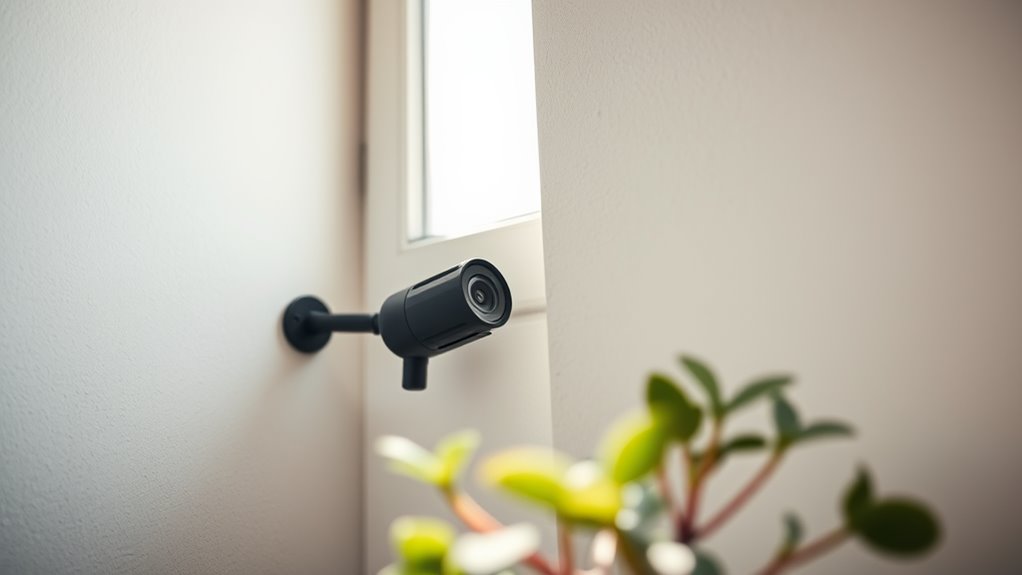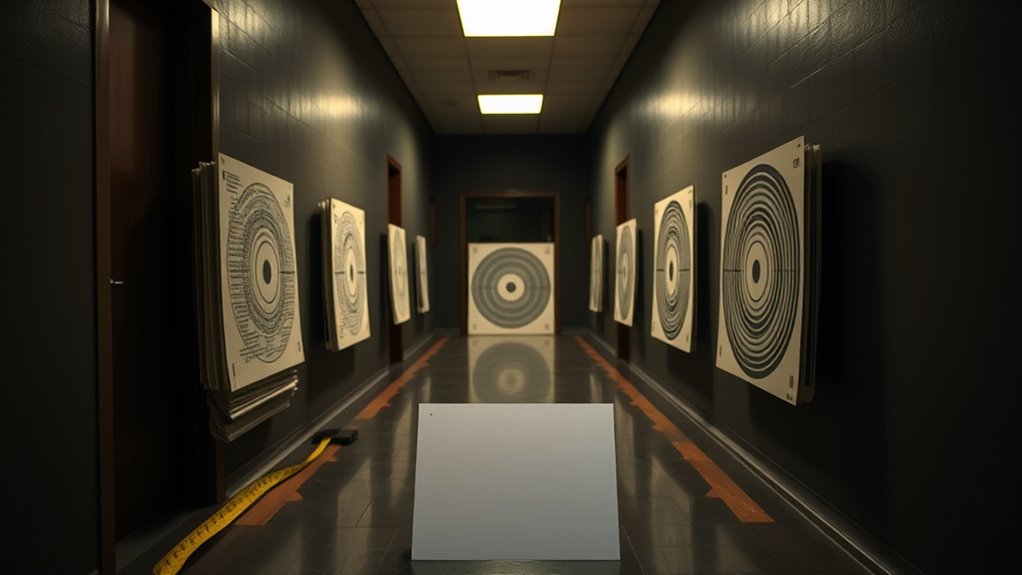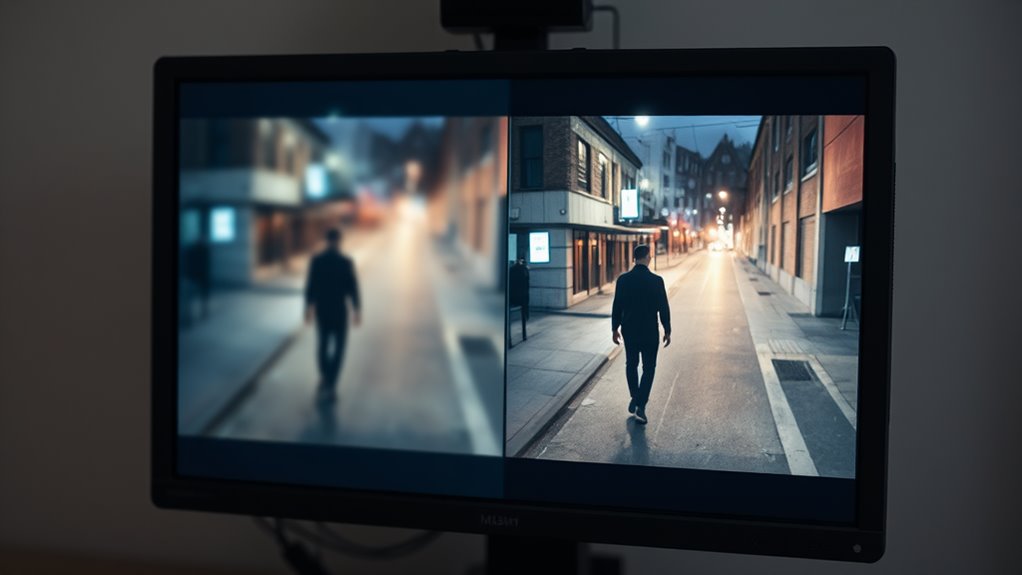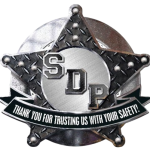Getting better pictures from your spy camera isn't rocket science – it's all about smart setup and a few clever tricks. First up, try mounting your camera about as high as your bedroom ceiling, around 8-10 feet up, and point it downward at an angle (kind of like how you'd tilt your head to read a book in your lap). Trust me, this sweet spot gives you the best view of everything happening below.
Stay away from windows, though – they're like kryptonite for spy cameras! Instead, move your camera around different spots until you find one where nothing's hiding in the shadows. Speaking of shadows, those can be pretty annoying, right? That's where frosted light bulbs come in handy – they spread the light around nicely, just like butter on toast, so you won't get those harsh dark spots in your footage.
Now for the tech stuff: play around with your camera's ISO settings (that's just fancy talk for how sensitive it is to light) to keep the picture clear without looking all grainy. Try to keep it at 1080p if you can – it's like wearing glasses versus squinting at things far away. One cool trick is turning on motion detection, which means your camera only records when something's actually happening. It's like having a smart assistant who only takes notes during the important parts of class!
Remember to back up your videos regularly, too. You don't want to lose important footage – it's like dropping your ice cream cone right after you bought it! With all these tips working together, you'll end up with crystal-clear footage that shows you exactly what you need to see.
Camera Placement and Positioning

Listen, proper camera placement is absolutely critical – and I mean critical! No one wants grainy, useless footage when it matters most.
Quick tips for nailing your security camera setup:
- Mount those bad boys 8-10 feet high (because let's face it, no one looks good from a low angle)
- Aim downward at about 30-45 degrees – trust me on this one
- Keep them 15-50 feet from your target area, depending on the camera
I can't tell you how many times I've seen perfectly good cameras rendered useless because someone stuck them behind a window (rookie mistake!) or didn't account for the sun's glare.
Been there, done that, learned the hard way.
Take time to test different spots, day and night. Because nothing's worse than discovering your "perfect" placement is actually catching nothing but shadows at 2 AM. Ensuring compatibility with your computer system, like Windows or Mac OS, is key for efficient video download and viewing.
Pro tip: Grab a friend and have them walk through your target area while you watch the feed on your phone – it's the fastest way to spot dead zones and blind spots you might've missed.
For optimal clarity, consider the aspect ratios of your camera, as they can significantly affect the quality of your recorded images and videos.
Proper Lighting Techniques
Let's talk lighting – it's literally make-or-break for your footage! You know that feeling when you're trying to take the perfect photo and the lighting just won't cooperate? Yeah, surveillance cameras feel that pain too. Natural light is your best friend during the day, but like that one demanding friend, it needs careful management. No one wants footage that looks like it was shot through a nuclear blast of sunshine.
Quick lighting fixes:
- Use frosted bulbs – they're like Instagram filters for real life
- Position lights at different angles (because shadows are sneaky)
- Bounce light off surfaces (get creative with those reflections!)
Sometimes the simplest solution is the best one. Dark spots hiding crucial details? Add a subtle light source. Just remember – we're going for "invisible security," not "amateur film studio." Consider using a spy camera with motion detection, like the Mini Hidden Spy Camera, to ensure recording starts only when needed.
Pro tip: Test your camera feed at different times of day, and mark your calendar for seasonal lighting changes – trust me, winter and summer are like completely different planets when it comes to surveillance lighting. Also, consider using products with features like a flashing LED to simulate a working camera and deter potential intruders.
Adjusting Camera Settings

Let's be real – your security camera footage probably looks like a 1980s horror film right now. Frustrating, right?
Time to fix that! Here's what you need to know:
- ISO is your best friend. Keep it low in bright spaces (duh!), crank it up when it's dark – but watch out for that grainy mess.
- Exposure values are tricky little devils. Too bright? Dial it down. Too dark? Pump it up. Finding that perfect balance is like dating – takes time and patience!
Ever notice how your footage looks amazing at noon but turns into a blurry nightmare at sunset? Yeah, that's because you need different settings for different times. Trust me, I've been there.
Playing with these settings might feel overwhelming at first. But hey, even the pros started somewhere!
Pro tip: Create a settings cheat sheet for different times of day – your future self will thank you when you're adjusting cameras at 2 AM in your pajamas.
Resolution and Storage Options
Let's talk resolution and storage – they're basically besties in the spy camera world! I mean, who doesn't want crystal-clear footage?
But here's the thing: you can't just crank up the resolution and call it a day.
Truth bomb: Most people obsess over megapixels when they should be thinking about the whole package.
Quick breakdown of what actually matters:
- 1080p – your sweet spot for most situations
- 720p – totally fine if storage is tight
- Memory cards – grab a few, trust me!
Look, I've been there – nothing worse than running out of storage right when things get interesting.
Motion detection is your friend here (and seriously, why record hours of empty rooms?). Just remember to backup your stuff regularly, or you'll be kicking yourself later.
Pro tip: Keep a spare SD card in your wallet – you'll thank me when your main card fills up during that one moment you absolutely can't miss capturing.
Post-Processing and Enhancement Methods

Let's talk post-processing magic – because nobody wants to watch shaky, grainy footage that looks like it was shot on a potato!
First up: stabilization. Those jerky movements? Gone. A few clicks in your editing software, and suddenly you're a cinematography genius. Trust me, your viewers will thank you.
Dealing with grainy footage is the worst. But don't panic! A little noise reduction goes a long way. Just remember – too much cleanup and your footage starts looking like a watercolor painting. Not cute.
Quick hits for better footage:
- Boost contrast for clearer details
- Adjust brightness in those shadowy spots
- Fix those washed-out colors
Remember, the sooner you clean up your recordings, the better they'll turn out. Because trying to fix month-old footage? That's like trying to frost a melted cake – messy and disappointing.
Pro tip: Always save your original footage before editing – you can't un-process processed video, and you might need that raw footage later!
Frequently Asked Questions
What Is the Average Battery Life of a Spy Small Camera?
Spy cameras are pretty amazing little gadgets, but they do come with a catch – the battery life isn't exactly marathon-worthy. Most of them will keep recording for about 1-4 hours straight, kind of like watching a movie before needing a recharge. Think of it as your camera taking a coffee break!
The good news is, you can get more juice out of your spy camera with some smart tricks. It's like teaching your camera to be a bit more energy-efficient! Instead of letting it record non-stop (which is kind of like leaving your car running in the driveway), you can use neat features like motion detection. This way, your camera only springs into action when something's actually happening – pretty clever, right?
Another battery-saving superhero is the scheduled recording feature. You can tell your camera exactly when to work, like a tiny security guard with very specific shifts. Plus, if you take good care of your battery (you know, regular charging and not letting it completely die), it'll thank you by lasting longer. Just like how we all perform better after a good night's sleep!
Are Spy Small Cameras Legal to Use in Public Places?
Let's talk about spy cameras in public—it's kind of like playing a game of red light, green light with the law! While these tiny gadgets aren't completely off-limits in public spaces, you've got to be super careful about where and how you use them. Think of it as having a cool superpower that comes with some serious ground rules.
Picture this: you're walking down a busy street with your tiny camera, and just like your mom always taught you about respecting others' space, there are certain places that are totally off-limits. Bathrooms, locker rooms, or anywhere people expect some privacy? Those are absolute no-go zones, like trying to peek through someone's bedroom window—definitely not cool!
The whole thing is pretty much common sense when you think about it. Just like you wouldn't want someone secretly filming you while you're changing clothes at the gym, other folks feel the same way. It's a bit like having an invisible boundary line that everyone agrees not to cross, kind of like that unspoken rule about not eating someone else's lunch from the office fridge!
Can Spy Cameras Work Effectively Through Glass or Other Transparent Materials?
When you're trying to film through glass, it's kind of like looking through a window on a sunny day – things can get a bit tricky! Those pesky reflections love to photobomb your shots, and sometimes the glass can make everything look a bit wonky, like you're seeing the world through a fun-house mirror. Trust me, I've been there, scratching my head while trying to get a clear shot through my living room window!
The good news is, there's a simple trick that really helps, and it's not rocket science. Just scoot your camera as close to the glass as possible – I mean, practically giving it a little hug against the surface. Think of it like pressing your nose against a store window to get a better look at what's inside, minus the nose prints!
Here's another cool tip that works like magic: put something dark behind your camera. It's like giving your camera its own little backstage area, and it helps knock out those annoying reflections that keep trying to steal the show. I usually use a piece of dark fabric or cardboard, and it works like a charm every time!
How Far Can a Wireless Spy Camera Transmit Footage?
Most wireless cameras can beam their footage about 300 feet in perfect conditions, you know, like if you're standing in an open field on a clear day. But let's get real – your actual range is probably going to be quite different, kind of like how your phone's signal drops when you walk into an elevator!
Think of walls, furniture, and other stuff in your house as little signal roadblocks. They're like those annoying obstacles in a video game that keep you from reaching the finish line! Every wall the signal has to punch through makes the connection a bit weaker. And don't even get me started on electronic devices – your microwave, Wi-Fi router, and other gadgets are all throwing their own signals around, creating a invisible traffic jam of waves in your house.
What Weather Conditions Can Affect Outdoor Spy Camera Performance?
Weather can be pretty tricky when it comes to outdoor spy cameras, and sometimes Mother Nature just doesn't want to play nice! Rain is probably the biggest troublemaker – it's like trying to look through a wet shower door, making everything all blurry and hard to see. Snow isn't much better, turning your crystal-clear camera view into something that looks more like a fuzzy winter wonderland.
Then there's fog, which is basically nature's way of throwing a blanket over your camera lens, kind of like when your glasses steam up on a cold day. Hot weather can make your camera act a bit wonky too, while super cold temperatures might make it sluggish, sort of like how we all feel on a freezing winter morning.
And don't even get me started on wind! Strong gusts can turn your steady camera into a wobbly mess, making your footage look like it was filmed on a rollercoaster. Heavy rain or snow falling right in front of your camera is like having someone constantly wave their hand in front of the lens – pretty frustrating when you're trying to keep an eye on things!




